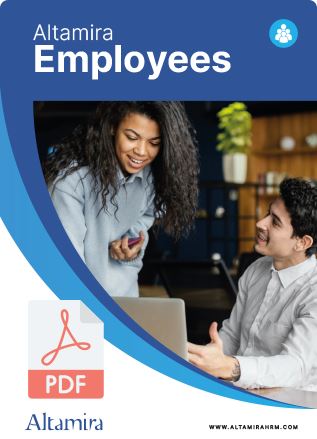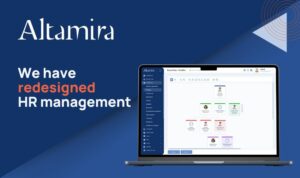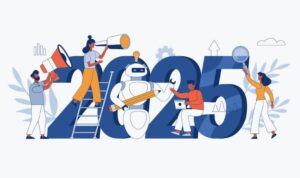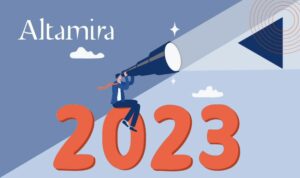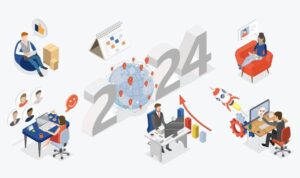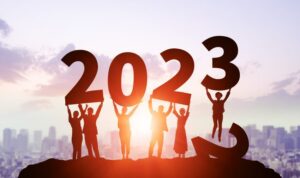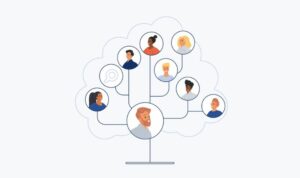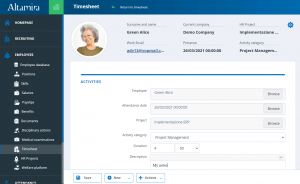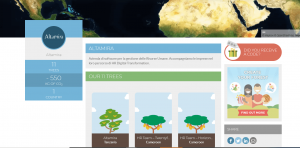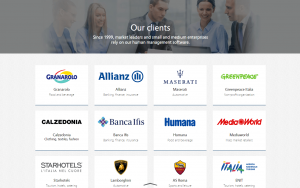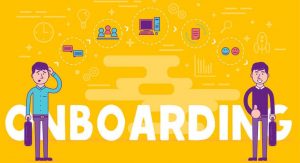One of the most used marketing techniques in the HR world is the recruiting funnel.
Through this path – which, in the field of marketing, makes it possible to organize all the stages that lead a prospect to become a client – a Human Resources professional is able to plan search and selection and retention strategies, following candidates up to recruitment and beyond.
Therefore, this is a method that serves to put the candidate – and, at a later stage, the employee – at the center of the company’s activity, in the same way that the work of the marketing and sales team revolves around the clients.
Thanks to the recruiting funnel, it is possible to optimize the application process, identifying the best strategy, using the right tools and monitoring the results through KPIs.
There are different models of recruitment funnels: the one that we present below also looks at the retention period, with the aim of maintaining an adequate turnover and increasing employee satisfaction.
Other recruiting funnels stop at the hiring phase. The same phenomenon can be seen in the strategies of many companies, where once a talent has been hired, there is no plan to cultivate and retain them.
In our vision, recruiting should not be an activity that is disconnected from Human Resources management overall. It is no coincidence that we produce a complete suite of HR software.
The recruiting funnel: infographic
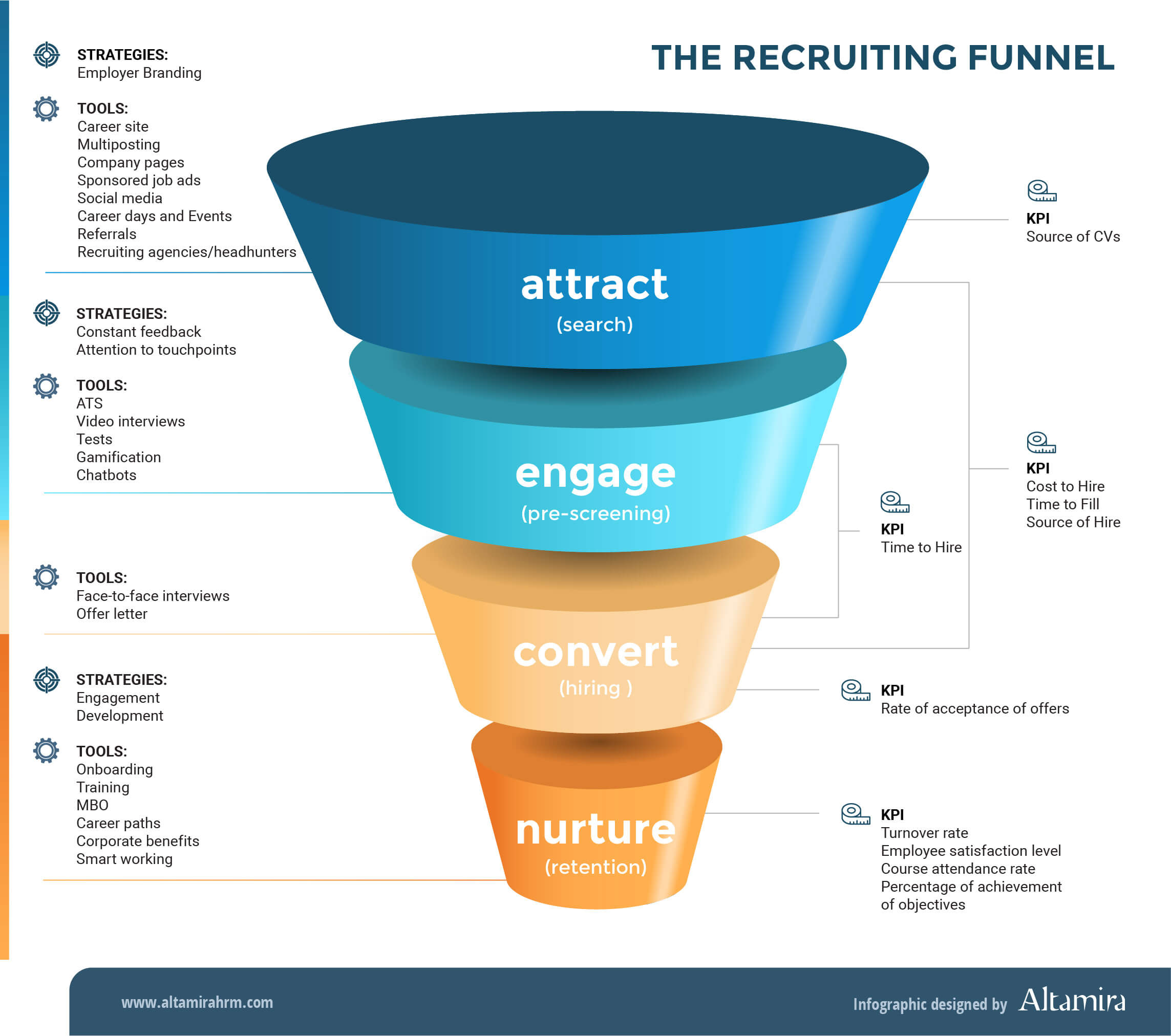
The recruiting funnel in detail
Let’s analyze the contents of the infographic, phase by phase.
The Attraction/Search phase
Posting a vacancy is only a small part of what a company can do to find valuable candidates to add to its workforce.
It is necessary to be able to make one’s offers stand out among the many that are published every day, and to be able to attract the interest of passive candidates.
It is therefore essential to develop an employer branding strategy, i.e. to ensure that your company (brand) is known and valued as a place to work.
This strategy, which Human Resources and Marketing should pursue in close collaboration, must aim to give maximum visibility to the company through the many tools and channels available.
Let’s go deeper into the most used of these:
- The Career Site. The Careers page of the company website is the main foundation for any employer branding strategy. In this section, all the materials describing the company’s culture, mission and climate (interviews with managers and employees, office tours, charitable and sustainability initiatives, benefits provided, etc.) should be shown, as well as the list of open positions. In order to capture the interest of candidates, a career site must comply with a series of requirements, including clear and attractive graphics, a responsive layout to be easily accessible from any device, short application forms, etc.
- Multiposting. During the search phase, we want our ads to be read by a very large number of candidates. However, they tend to frequent different job search sites. In order to avoid having to manually post ads on each of them, many companies take advantage of the multiposting feature of their ATS, which with one click is able to publish their offers on a dense network of portals and job boards. If you publish more than a couple of ads per year, this feature alone justifies the purchase of an ATS.
- Company page. In addition to the Career Site, there are other showcase opportunities that you should take advantage of. The two most important ones are the company pages on Indeed and LinkedIn. The purpose of both platforms is to increase the visibility of companies and give them the opportunity to convey more information and a particular “feel” to those who visit them, whether they are looking for work or not. Indeed’s offer is particularly advanced, with free and paid functionalities and the presence of employee reviews, often used by candidates to evaluate a company.
- Sponsored job ads. The search phase may also include the purchase of sponsored ads to highlight your vacancies on one or more channels and attract more applications. These tools are used especially when the candidates sought are difficult to find, due to the scarcity of talent on the market or the high level of competition for these types of candidate profiles.
- Social media. Companies have long since learned how to get on top of social networks and use them for marketing and customer support operations. A more recent phenomenon is employer branding initiatives on these channels, among which LinkedIn and Instagram are those that are best suited for this purpose, albeit for different reasons: the first because it is the professional social network par excellence, the second because, with its strong visual impact, it works well for sharing photos and videos that illustrate the corporate climate inside and outside the office.
- Career days and Events. Nowadays, companies organize and attend career days not so much to hire people on the spot, but to make their brand known and create a reserve of candidates (and customers) for the future. In particular, taking part in university career days serves to make people feel that the company is part of the social fabric and has ties to the local territory. Technology is also making its way into this area. It is possible to organize virtual career days (for example, through Indeed) or digitally collect CVs during physical events thanks to an ATS.
- Referrals. One of the main aims of employer branding is to turn employees into brand ambassadors, people who are enthusiastic about working in their company and who promote it to friends, relatives and acquaintances. Achieving this outcome means having a new channel for job applications, one that doesn’t cost anything and is particularly interesting.
- Recruiting agencies and headhunters. It is not always possible or convenient for a company to conduct a search and selection process with its own resources alone. In such cases, you can rely on industry professionals such as recruiting firms and headhunters. The advice in this case is to integrate their work into the business strategy and processes, for example by asking them to use the company’s ATS to track their work.
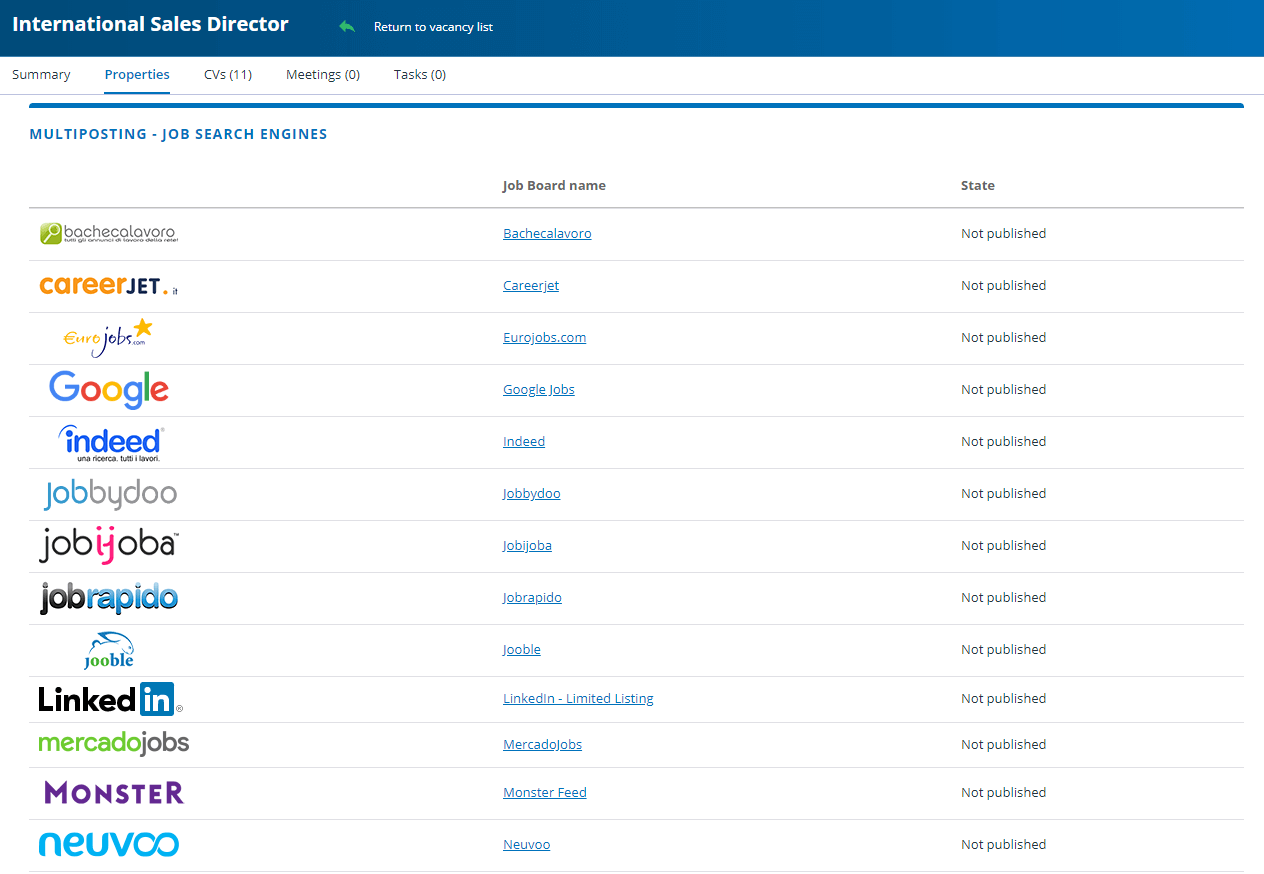
The KPIs of the Search phase
At this stage, one will start by deciding on a series of metrics related to recruiting, which, later on, will make it possible to answer a number of questions on the efficiency of the search channels.
Tracking the source of CVs allows us to know which channel brings in the most candidates, but this is weak information if not also combined with the source of hire, which tells us which channels brought in the most fitting candidates.
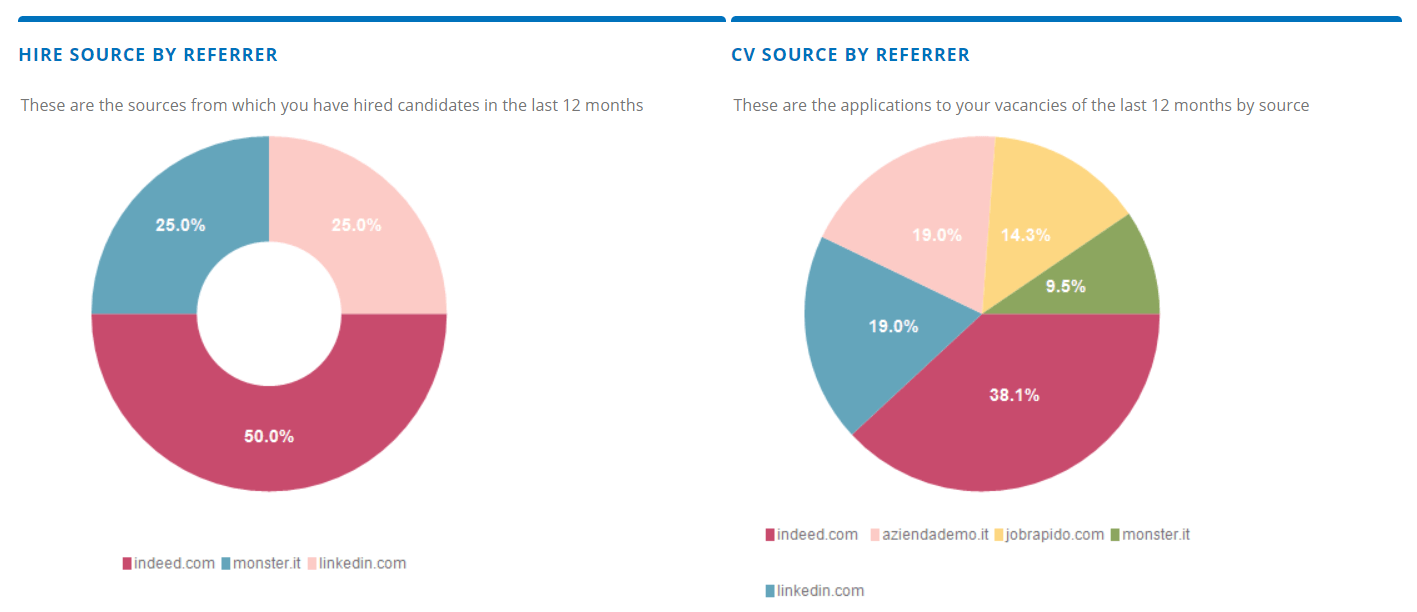
At this stage, one also starts to calculate the time to fill, i.e. the time that elapses between the opening of a position and the recruitment of the chosen candidate.
Then, the investments made in the employer branding strategy and to cultivate each channel become part of the cost to hire, a KPI that each company is calculating in a more or less complex way.
The Engagement/Pre-Screening phase
Companies are paying more and more attention to the pre-screening phase. Once almost ignored—as one went from receiving CVs directly to the selections for in-person interviews—today this phase makes extensive use of digital tools to get to know the candidates better and provide constant feedback.
This mainly involves:
- ATSes. Modern ATS solutions provide a range of tools that support recruiters in candidate analysis and managing engagement. They offer vacancy templates for writing quality job offers, personal areas for candidates in career sites, automatic and mass communication systems, advanced search tools, killer questions, automatic screening, etc.
Most importantly, they allow you to track the activities carried out involving each candidate, transforming them from an unknown into a present or future assets for the company. - Video interviews. The quintessential substitute for face-to-face interviews during lockdown, this is a useful tool in every season to “meet” more candidates and get an idea of their communication and interpersonal skills. In particular, on-demand video interviews favor engagement, since the candidate can take the interview when it is more convenient for them and in a comfortable environment. As a result, they are welcomed, especially by the new generations.
- Tests. By subjecting candidates to tests of various kinds (psycho-attitudinal, technical, language, etc.) you can go through a large number of candidates and reward merit. Tests also allow generalist recruiters to assess candidates on specialist skills before the decisive interview with the hiring manager takes place.
- Gamification. The idea of evaluating soft and hard skills through digital games seemed like a winning one from the start (what could be more interactive than a video game?), but despite this fact, gamification is still widespread only among multinationals and some large companies. Most likely, the customization costs are excessive for SMEs.
- Chatbots. Whether based on artificial intelligence or not, these automated chats can accompany and guide candidates who visit the company’s career site to the position that would suit them best. They are a good addition to your arsenal of pre-screening tools, designed primarily for large companies.
The KPIs of the Engagement phase
Once the CV screening process has started, the “counter” for the time to hire metric is also activated, which evaluates the speed with which the company carries out the activities strictly related to selection.
This is also the phase in which candidates are asked to fill out a survey about their application path to identify any critical issues. The costs incurred in the engagement phase can also become part of the cost to hire metric, depending on the model used in the company.
The Conversion/Hiring phase
Many selection processes break down just one step from the final goal, when the chosen candidate decides to accept another offer. For this reason, the final stages of the recruiting funnel should also be treated with the same attention as the initial ones.
Face-to-face interviews (when possible) are still one of the key moments in recruiting, about which a lot has been written. But other details can also make a difference, such as the offer letter. If well-written and customized for the candidate, it can prove decisive in getting them to accept.
Many recruitment funnel models end with this phase.
The KPIs of the Hiring Phase
In this phase, the tracking of many previously introduced KPIs is concluded, such as time to fill and time to hire, cost to hire, source of hire, etc.

An interesting metric that belongs exclusively to this phase is the rate of acceptance of offers. If this is too low, it means that something is failing to convince the candidate at the decisive moment: it could be the gross annual salary, the contractual framework, the tasks, the work schedule or something else. One should find out what it is as soon as possible in order not to waste all the work done at the previous stages.
The Nurturing/Retention phase
As already mentioned, many recruitment funnel models stop at the hiring phase. This is an equally valid perspective – however, in our opinion, this risks entrenching the notion that the search and selection activity is little integrated with the rest of the human resources management activities.
This is a mistake still being made by many companies which, after making great efforts to secure the best talent out there, don’t pay as much attention to cultivating them and keeping them for the long term.
It is essential, therefore, that the logical progression that led the candidate to become an employee is not broken, and that they don’t get the impression that all the promises made during the attraction phase have vanished into thin air.
Therefore, one should carefully manage the entry and life of an employee within the company, with a robust engagement and development strategy which increases the value of the employees and encourages them to remain in the company as involved players and participants in the company business.
Some of the main tools and processes available to the HR department to increase staff retention are:
- Onboarding. The insertion phase for a new employee requires a lot of attention, since it will influence the opinion that they will make about the company. On the one hand, bureaucratic and organizational steps must be sped up thanks to digitization; on the other hand, opportunities for contact, discussion and dialogue with colleagues must be encouraged, through the assignment of a mentor, a wide-ranging training plan and introduction meetings.
- Training. In Italy, investments in training are still inadequate and mostly tied to the legally mandatory requirements. However, training is the most effective tool to develop employees’ skills and increase retention. The use of e-learning could allow companies to increase the number of courses without affecting the budget too much, but one should not overlook the greater performance of blended courses, now attested by numerous studies.
- MBO. The management by objectives of work activities – and of rewards – increases employee awareness and involvement, improves productivity and rewards meritocracy. Therefore, this is an extraordinary tool for engagement and retention.
- Career paths. Career plans or career paths are a valuable retention tool, as they allow the employee to see a horizon of growth and empowerment ahead of them. In order to draw them up, you need to map the skills needed for each role and assess the skills of each employee.
- Corporate benefits. Compensation remains one of the most important factors in employee retention. Thanks to corporate benefits, companies can supplement the salary with a flexible basket of benefits.
- Smart working. Whether this comes in the form of a deep review of business processes according to the dictates of smart working or, in simpler terms, working from home, nowadays it’s hard to imagine that a company could forego this entirely. In fact, this is now a “benefit” that most candidates and employees expect to receive and would hardly be willing to give up.
The KPIs of the Retention phase
In this phase of the funnel, the reference metrics change radically. At this point, they are measuring, in a qualitative and quantitative way, the degree of engagement and retention of staff.
- Turnover rate. The turnover rate gives a quantitative indication of the company’s retention capacity. It is calculated with the following formula: ((no. of staff hired during the year + no. who left during the year)/average annual staff)*100.
- Employee satisfaction level. The easiest and most effective way to understand whether the engagement and retention strategy is working is to ask those it is aimed at. Conduct annual or semi-annual surveys to understand whether the initiatives undertaken are succeeding and employees are satisfied with the company.
- Course attendance rate. The attendance for courses is a useful indicator to understand if the training plan drawn up is being well received among the staff.
- Percentage of achievement of objectives. Good performance indicates that employees are truly involved in the company’s business.
Copyright: ©Mykola/Adobe Stock


